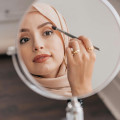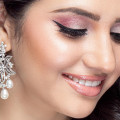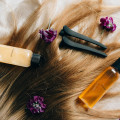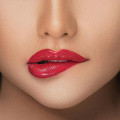The Complete Guide to Shampooing for Men and Women

Shampooing is a fundamental part of any hair care routine, but there's more to it than simply washing your hair. The right shampoo, combined with proper techniques and frequency, can make a significant difference in the health and appearance of your hair. Whether you have dry, oily, curly, or straight hair, this guide provides a complete overview of shampooing for both men and women, helping you achieve your best hair yet.
Table of Contents
- Understanding Your Hair Type
- Choosing the Right Shampoo
- How Often Should You Shampoo?
- Step-by-Step Shampooing Guide
- Common Hair Concerns and Solutions
- Tips for Maintaining Healthy Hair
- Conclusion
Understanding Your Hair Type
The first step to effective shampooing is understanding your hair type, as this will influence your shampoo choice and how often you should wash your hair.
- Normal Hair: Balanced, neither too oily nor too dry, and generally easy to manage.
- Oily Hair: Produces excess oil, often appearing greasy shortly after washing.
- Dry Hair: Lacks moisture, often feeling rough or brittle.
- Curly Hair: Naturally drier due to the shape of the hair strands, which makes it harder for natural oils to travel down the hair shaft.
- Color-Treated Hair: Hair that has been dyed or chemically treated, which can be more prone to dryness and damage.
Choosing the Right Shampoo
Selecting the right shampoo is crucial for addressing your specific hair needs. Here are some tips for choosing the best shampoo for your hair type:
Normal Hair: A mild, balanced shampoo that cleans without stripping away natural oils is ideal. Look for formulas labeled as "daily use" or "gentle."
Oily Hair: Choose a clarifying shampoo that removes excess oil and buildup without over-drying the scalp. Avoid heavy, moisturizing shampoos that can weigh down your hair.
Dry Hair: Opt for a hydrating shampoo with nourishing ingredients like argan oil, shea butter, or glycerin. Avoid shampoos with sulfates, as they can further dry out your hair.
Curly Hair: Use a sulfate-free, moisturizing shampoo designed for curly hair to enhance curls and prevent frizz.
Color-Treated Hair: A color-safe shampoo that is sulfate-free will help preserve your color while providing necessary moisture.
How Often Should You Shampoo?
The frequency of shampooing depends on your hair type, lifestyle, and personal preference. Here's a general guide:
Normal Hair: Shampoo 2-3 times a week to keep hair clean and balanced.
Oily Hair: You may need to shampoo daily or every other day to control oil. However, try to gradually extend the time between washes to avoid over-stimulating oil production.
Dry Hair: Shampooing 1-2 times a week is usually sufficient. Over-washing can strip natural oils, leading to even drier hair.
Curly Hair: Shampooing once a week or even less is often enough, as curly hair benefits from the natural oils produced by the scalp.
Color-Treated Hair: Shampoo 2-3 times a week with a color-safe formula to maintain your color and keep your hair healthy.
Step-by-Step Shampooing Guide
Follow these steps to ensure you get the most out of your shampooing routine:
1. Prep Your Hair
Before applying shampoo, thoroughly wet your hair with warm water. This helps open the hair cuticles, allowing the shampoo to penetrate and clean more effectively.
2. Apply Shampoo
Dispense a small amount of shampoo into your palm (about a quarter-sized amount for short hair, slightly more for longer hair). Rub your hands together to evenly distribute the shampoo before applying it to your scalp.
3. Massage Your Scalp
Gently massage the shampoo into your scalp using your fingertips (not your nails) in circular motions. Focus on the roots where oil and dirt accumulate. Avoid roughly scrubbing your scalp, as this can cause irritation and damage.
4. Work the Lather Down
After massaging your scalp, work the lather down the length of your hair. There's no need to apply extra shampoo to the ends, as the lather from your scalp is enough to clean them.
5. Rinse Thoroughly
Rinse your hair thoroughly with warm water to remove all the shampoo. Make sure no residue is left behind, as it can cause buildup and dullness.
6. Condition Your Hair
Follow up with a conditioner suited to your hair type. Apply it mainly to the mid-lengths and ends, avoiding the scalp unless your hair is very dry.
7. Rinse with Cool Water
Rinsing your hair with cool water at the end helps seal the cuticles, making your hair smoother and shinier.
Common Hair Concerns and Solutions
1. Dandruff
Dandruff can be caused by a dry scalp, oily buildup, or sensitivity to hair products. Use an anti-dandruff shampoo containing ingredients like zinc pyrithione, ketoconazole, or tea tree oil to treat and prevent dandruff.
2. Hair Loss
If you're experiencing hair loss, consider using a gentle shampoo that doesn't strip your scalp of essential oils. Look for shampoos with biotin, caffeine, or niacin, which can help strengthen hair and promote growth.
3. Frizz
Frizz is often caused by dryness or humidity. A moisturizing shampoo followed by a leave-in conditioner or anti-frizz serum can help smooth frizz and add shine.
4. Dull Hair
If your hair looks dull, a clarifying shampoo can remove buildup from styling products and hard water. Use it once a week to restore shine.
Tips for Maintaining Healthy Hair
Avoid Over-Washing: Washing your hair too frequently can strip it of natural oils, leading to dryness and damage. Find a balance that works for your hair type.
Use Lukewarm Water: Hot water can dry out your hair and scalp. Use lukewarm water to wash your hair and cool water for the final rinse.
Be Gentle: When shampooing, be gentle with your hair to avoid breakage. Don't scrub your scalp too hard or pile your hair on top of your head.
Choose the Right Products: Use shampoos, conditioners, and treatments that are suited to your hair type and concerns.
Protect Your Hair: If you frequently style your hair with heat tools, use a heat protectant spray to minimize damage.
Conclusion
Shampooing is more than just a way to clean your hair; it's an essential part of your hair care routine that can influence the health and appearance of your locks. By understanding your hair type, choosing the right products, and following proper shampooing techniques, you can keep your hair looking and feeling its best. Whether you're dealing with oily roots, dry ends, or color-treated hair, this guide offers the knowledge you need to achieve beautiful, healthy hair.

























































Leave a Comment